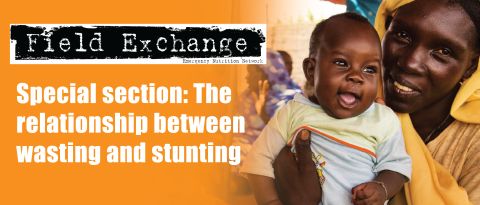Risk factors associated with wasting and severe wasting among under-5 children in India
This is a summary of the following report: Center for Health Research and Development & UNICEF India Country Office (2021) Analysis of wasting and severe wasting and its associated risk factors among under-5 children in India.
Wasting remains a major cause of child mortality and morbidity globally. Current guidelines for the prevention, diagnosis and management, especially among children under six months of age, are mainly based on studies conducted in African settings. In India, specific data for this age group is lacking. This paper, featuring the collaborative efforts of the Knowledge Integration and Translational Platform at the Centre for Health Research and Development, the Biotechnology Industry Research Assistance Council and UNICEF India, contains an in-depth analysis to understand the burden of wasting, including severe wasting, in India and its associated factors. The analysis utilised data from the Comprehensive National Nutrition Survey (CNNS) which included children 0 to 59 months (nationally representative), Knowledge Integration (KI) datasets which covered children aged 0 to 23 months (from 15 national studies) and the intervention group of an ongoing cohort, the Women and Infants Integrated Growth Study (WINGS) which included children aged 0 to 11 months (from a trial in Delhi).
Overall, the authors found a high prevalence of wasting in the CNNS and KI datasets, and a lower prevalence in WINGS (CNNS 17.3%, KI 16.4%, WINGS 5.8%), a pattern mirrored in the severe wasting estimates (4.9%, 3.7%, 0.5%, respectively). Across all datasets, the burden of wasting and severe wasting was highest in the first six months of life compared to older age groups. Children born small for gestational age or with low birth weight each displayed a higher prevalence of both wasting and severe wasting than appropriate for gestational age or and normal birthweight children, respectively. The incidence of wasting (new episodes of wasting) was 0.32 (KI) and 0.55 (WINGS) cases per 365 days follow-up. The patterns for incidence of wasting and severe wasting were comparable to the prevalence data.
In line with other studies, the factors that were associated with wasting were lower maternal education, maternal underweight, Caesarean section, low birthweight and being a male child. Wasting in the first six months of life was found to be an independent risk factor for wasting at 12 and 24 months of age (WINGS and KI datasets). The authors concluded that programmes should focus on health and nutrition interventions at pregnancy and pre-pregnancy time points (e.g., early identification of mothers at risk of undernutrition), as well as close growth monitoring and wasting management over the infant’s first 6 months of life, to counter the burden of wasting in early life and risks of wasting later in life.


